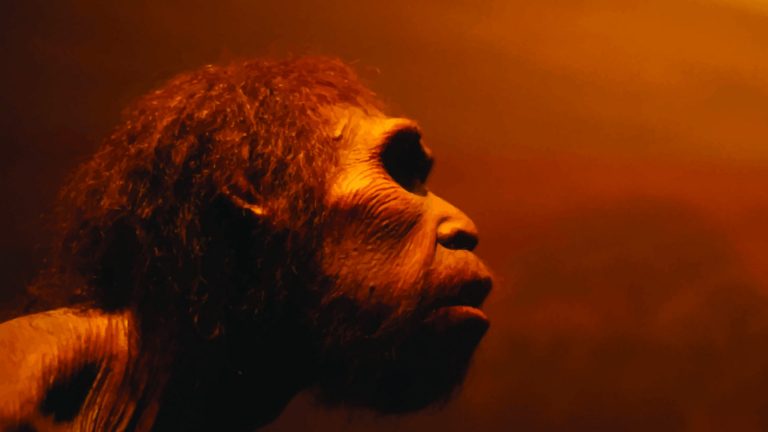The Hominids

Hominids diversified from the apes around 6 to 8 million years ago.
Table of Contents
Although humans in today’s world are the most advanced species on the planet, we previously shared the exact same genetic information of other animals in today’s world.
But all in all, the human ancestral line involves the hominid family, who diversified from the apes around 6 to 8 million years ago. Since then our evolutionary path has proved to be nothing short of phenomenal.
6 to 8 Million Years Ago – The Early Hominids
Since this sort of timescale is massive in terms of the time humans have existed, there is little evidence to back up any solid theories as to the exact date that hominids diversified from their previous fellow primates.
Previous scientific evidence pointed towards Europe being the origin of this occurrence though more recent research suggests that early hominids may have originated in Africa and migrated South.
The most famous example of evidence supporting this era is the skeleton “Lucy”, found in Ethiopia, in the African continent, where evidence dates her life at about 3 million years ago.
As the only remains from this period are bones, that have survived the test of time, skeletal features have helped us define the evolutionary process between primates and more modern but previous versions of today’s man.
The palaeoanthropologists who discovered such remains like Lucy mapped the subtle evolutionary changes in the skeletal structure of apes and what we define as early hominids, a distant ancestor of our present species.
The Australopithecines
The remarkable evolutionary chain that we follow here involves the australopithecines, Lucy being such a creature. We have little evidence of how these primates actually behaved, but we can distinguish noted differences such as a change in the size of the australopithecines head, pertaining to be more like a modern man.
One deduction made from evidence is that the early hominids were the first of the evolutionary line to move away from the jungle and into the open lands. This could have been a result of increased competition in the jungle, and therefore they diversified to the new location, and then returned to the jungle due to their inability to fit in the ecological niche at present.
In summary, three distinct species of the genus Australopithecus existed between 5 and 2 million years ago, all of which exhibited bipedal motion during their existence on Earth.
Australopithecus afarensis
Meaning “southern ape from afar”, this species probably roamed the Earth around 4 million years ago. This name was given due to the discovery of remains in Ethiopia in the early 20th century, where its discoveries in East Africa are restricted to this area, the Afar Triangle in Ethiopia
Australopithecus africanus
Believed to have derived from Australopithecus africanus, this species would have superseded the afarensis species due to its more aptly suited genome. The species remained roughly the same height, though continued to develop long term into a species more similar to man.
Australopithecus robustus and Australopithecus boisei
It is thought that these two species are in some way indirectly related to the long term ancestry of modern man.
Early Species of Homo
Around 2 million years ago, a significant change was occurring in the size of the brain of the australopithecines. The change in the overall structure of the species meant that taxonomists gave an entirely new genus to the species. The species of homo pertains to the more recent ancestral line of modern man, homo meaning the same as, and sapiens pertaining to ‘man’. This certainly seems relevant when looking in hindsight.
The first glimmers of intelligence were beginning to appear in these species that is comparable to modern man. Basic blunt stone tools were beginning to be used, which could be used in a variety of ways in the hominids’ daily lives. For example, the tools could be used for carving out their prey or using a stone to smash branches of trees for wood.
This, in turn, gave them the chance once again to survive out in the open land, as perhaps their distinct ancestors tried but were less prepared and evolved. This competitive advantage in early homo species was a result of natural selection itself, and thus a critical stage in the development of man.
You will also like...

The Evolution of Cell Organelles
The nucleus containing the genetic material, DNA, and the mitochondria, well-identified as the "powerhouse of the cell",..

Evolution of Life – Ancient Earth
Autotrophs flourished, absorbing carbon and light. Soon after, primitive life forms that could assimilate oxygen thrived..

New Zealand’s Unique Fauna
Meet some of New Zealand's unique fauna, including endemic insects, frogs, reptiles, birds, and mammals, and investigate..

Circulation
The circulatory system is key to the transport of vital biomolecules and nutrients throughout the body. Learn about the ..

Freshwater Communities & Lentic Waters
Lentic or still water communities can vary greatly in appearance -- from a small temporary puddle to a large lake. The s..

Roots
This study guide tackles plant roots in greater detail. It delves into the development of plant roots, the root structur..
